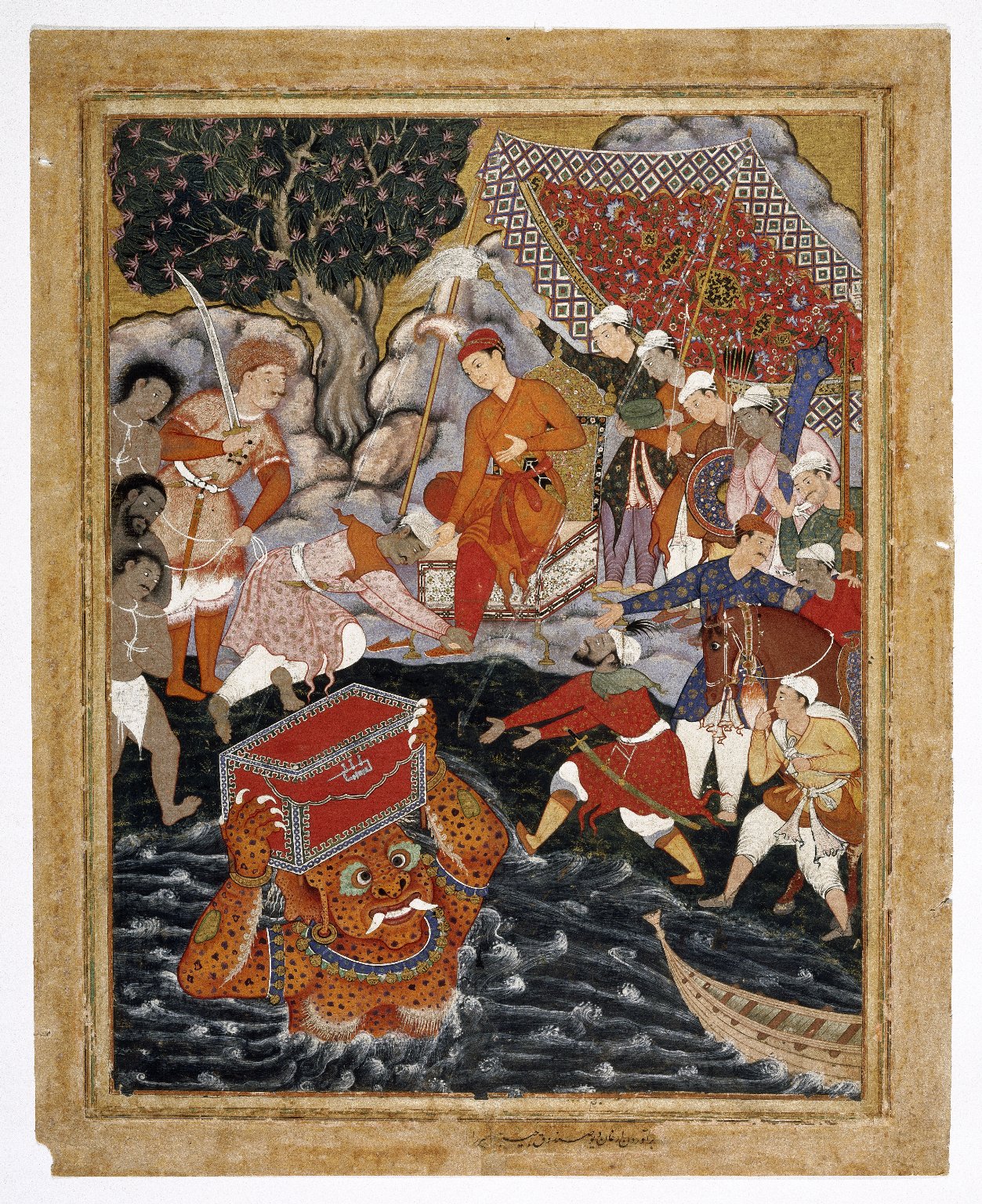|
Arcana (video Game)
''Arcana'' is a role-playing video game released for the Super Nintendo Entertainment System by HAL Laboratory in 1992. The game represents all of its characters as cards, but plays like a dungeon-crawling role-playing game rather than a card-based game. In keeping with this metaphor, the death of a character results in a 'torn' card, and the magical properties of some cards are used to explain abilities of the game's characters. Gameplay Assuming a first-person perspective, the dungeons and towns of the game are navigated from the viewpoint of the characters and, with a few exceptions, the conversations between characters hold true to this as well. Battles within the game are portrayed in the first-person, displaying the protagonist characters along the perimeter of the screen, with the enemies in the center. ''Arcanas battles, however, are not graphically intensive and the characters' animations are limited to, at most, five frames. Breaking from the format established by Sq ... [...More Info...] [...Related Items...] OR: [Wikipedia] [Google] [Baidu] |
HAL Laboratory
formerly shortened as HALKEN (derived from its native name), is a Japanese video game developer founded on 21 February 1980. While independent, it has been closely tied with Nintendo throughout its history, and is often referred to as a second-party developer for the company. HAL Laboratory is headquartered in Chiyoda, Tokyo, and it also has a building at Kai, Yamanashi. The company got its name because "each letter put them one step ahead of IBM". The company is most famous for their work on the ''Kirby'' and ''Mother'' series, as well as the first two '' Super Smash Bros.'' games. The logo, dubbed depicts a dog incubating eggs, which has been in use since 1998. History HAL Laboratory started off making games for the MSX system and VIC-20. After financial strain brought on from the development of '' Metal Slader Glory'' (1991) for the Famicom, Nintendo offered to rescue HAL from bankruptcy on the condition that HAL employee Satoru Iwata was appointed as its president, ... [...More Info...] [...Related Items...] OR: [Wikipedia] [Google] [Baidu] |
Dragon Quest
previously published as ''Dragon Warrior'' in North America until 2005, is a franchise of Japanese role-playing video games created by Armor Project (Yuji Horii), Bird Studio (Akira Toriyama) and Sugiyama Kobo (Koichi Sugiyama) to its publisher Enix, with all of the involved parties co-owning the copyright of the series since then. The games are published by Square Enix (formerly Enix) since its inception, with localized remakes and ports of later installments for the Nintendo DS, Nintendo 3DS, and Nintendo Switch being published by Nintendo outside of Japan. With its first game published in 1986, there are eleven main-series games, along with numerous spin-off games. In addition, there have been numerous manga, anime and novels published under the franchise, with nearly every game in the main series having a related adaptation. The series introduced a number of features to the genre and has had a significant impact on the development of other role-playing games. Installment ... [...More Info...] [...Related Items...] OR: [Wikipedia] [Google] [Baidu] |
GameRankings
GameRankings was a video gaming review aggregator that was founded in 1999 and owned by CBS Interactive. It indexed over 315,000 articles relating to more than 14,500 video games. GameRankings was discontinued in December 2019, with its staff being merged with the similar aggregator Metacritic. Rankings GameRankings collected and linked to (but did not host) reviews from other websites and magazines and averages specific ones. While hundreds of reviews may get listed, only the ones that GameRankings deemed notable were used for the average. Scores were culled from numerous American and European sources. The site used a percentage grade for all reviews in order to be able to calculate an average. However, because not all sites use the same scoring system (some rate out of 5 or 10, while others use a letter grade), GameRankings changed all other types of scores into percentages using a relatively straightforward conversion process. When a game accumulated six total reviews, it w ... [...More Info...] [...Related Items...] OR: [Wikipedia] [Google] [Baidu] |
Level (video Games)
In video games, a level (also referred to as a map, stage, or round in some older games) is any space available to the player during the course of completion of an objective. Video game levels generally have progressively-increasing difficulty to appeal to players with different skill levels. Each level may present new concepts and challenges to keep a player's interest high. In games with linear progression, levels are areas of a larger world, such as Green Hill Zone. Games may also feature interconnected levels, representing locations. Although the challenge in a game is often to defeat some sort of character, levels are sometimes designed with a movement challenge, such as a jumping puzzle, a form of obstacle course. Players must judge the distance between platforms or ledges and safely jump between them to reach the next area. These puzzles can slow the momentum down for players of fast action games; the first ''Half-Life'''s penultimate chapter, "Interloper", featured mult ... [...More Info...] [...Related Items...] OR: [Wikipedia] [Google] [Baidu] |
Save Point
A saved game (also called a game save, savegame, savefile, save point, or simply save) is a piece of digitally stored information about the progress of a player in a video game. From the earliest games in the 1970s onward, game platform hardware and memory improved, which led to bigger and more complex computer games, which, in turn, tended to take more and more time to play them from start to finish. This naturally led to the need to store in some way the progress, and how to handle the case where the player received a " game over". More modern games with a heavier emphasis on storytelling are designed to allow the player many choices that impact the story in a profound way later on, and some game designers do not want to allow more than one save game so that the experience will always be "fresh". Game designers allow players to prevent the loss of progress in the game (as might happen after a game over). Games designed this way encourage players to 'try things out', and on r ... [...More Info...] [...Related Items...] OR: [Wikipedia] [Google] [Baidu] |
Tile
Tiles are usually thin, square or rectangular coverings manufactured from hard-wearing material such as ceramic, stone, metal, baked clay, or even glass. They are generally fixed in place in an array to cover roofs, floors, walls, edges, or other objects such as tabletops. Alternatively, tile can sometimes refer to similar units made from lightweight materials such as perlite, wood, and mineral wool, typically used for wall and ceiling applications. In another sense, a tile is a construction tile or similar object, such as rectangular counters used in playing games (see tile-based game). The word is derived from the French word ''tuile'', which is, in turn, from the Latin word ''tegula'', meaning a roof tile composed of fired clay. Tiles are often used to form wall and floor coverings, and can range from simple square tiles to complex or mosaics. Tiles are most often made of ceramic, typically glazed for internal uses and unglazed for roofing, but other materials are also c ... [...More Info...] [...Related Items...] OR: [Wikipedia] [Google] [Baidu] |
Boss (video Games)
In video games, a boss is a significant computer-controlled opponent. A fight with a boss character is commonly referred to as a boss battle or boss fight. Bosses are generally far stronger than other opponents the player has faced up to that point. Boss battles are generally seen at climax points of particular sections of games, such as at the end of a level or stage or guarding a specific objective. A miniboss is a boss weaker or less significant than the main boss in the same area or level, though usually more powerful than the standard opponents and often fought alongside them. A superboss (sometimes 'secret' or 'hidden' boss) is generally much more powerful than the bosses encountered as part of the main game's plot and is often an optional encounter. A final boss is often the main antagonist of a game's story and the defeat of that character usually provides a positive conclusion to the game. A boss rush is a stage where the player faces multiple previous bosses again i ... [...More Info...] [...Related Items...] OR: [Wikipedia] [Google] [Baidu] |
Marid
''Marid'' ( ar, مارد ') is a type of devil in Islamic traditions. The Arabic word meaning ''rebellious'' is applied to such supernatural beings. In Arabic sources Etymology The word ''mārid'' is an active participle of the root ''m-r-d'' (مرد), whose primary meaning is ''recalcitrant, rebellious''. ''Lisān al-`arab'', the encyclopedic dictionary of classical Arabic compiled by Ibn Manzur, reports only forms of this general meaning. It is found as an attribute of evil spirits in the Qur'an (aṣ-Ṣāffāt, 37:7), which speaks of a "safeguard against every rebellious devil" (شَيْطَانٍ مَارِدٍ, ''shaitān mārid''). From the same Semitic root come the Hebrew words "Mered" (מרד "rebellion") and "Mored" (מורד "rebel"). The Wehr-Cowan dictionary of modern written Arabic also gives secondary meanings of ''demon'' and ''giant'' (Persian: ': ). Lane's '' Arabic-English Lexicon'' cites a source where it "is said to be applied to an evil jinnee of the mo ... [...More Info...] [...Related Items...] OR: [Wikipedia] [Google] [Baidu] |
Ifrit
Ifrit, also spelled as efreet, afrit, and afreet (Arabic alphabet, Arabic: ': , plural ': ), is a powerful type of demon in Islamic mythology. The afarit are often associated with the underworld and identified with the spirits of the dead, and have been compared to Genius Loci, evil ''geniī loci'' in Culture of Europe, European culture.Edward Westermarck ''Ritual and Belief in Morocco: Vol. I (Routledge Revivals)'' Routledge, 23 Apr 2014 p. 387 In Quran, hadith, and Isra and Mi'raj, Mi'raj narrations the term is always followed by the phrase ''among the jinn''. In later Folklore#Islam, folklore, they developed into independent entities, identified as powerful demons or ghost, spirits of the dead who sometimes inhabit desolate places such as ruins and temples. Their true habitat is the Jahannam, underworld.Chelhod, J., “ʿIfrīt”, in: Encyclopaedia of Islam, Second Edition, Edited by: P. Bearman, Th. Bianquis, C.E. Bosworth, E. van Donzel, W.P. Heinrichs. Consulted online o ... [...More Info...] [...Related Items...] OR: [Wikipedia] [Google] [Baidu] |
Sylph
A sylph (also called sylphid) is an air spirit stemming from the 16th-century works of Paracelsus, who describes sylphs as (invisible) beings of the air, his elementals of air. A significant number of subsequent literary and occult works have been inspired by Paracelsus's concept: Robert Alfred Vaughan noted that "the wild but poetical fantasies" of Paracelsus had probably exercised a larger influence over his age and the subsequent one than is generally supposed, particularly on the Rosicrucians, but that through the 18th century they had become reduced to "machinery for the playwright" and "opera figurantes with wings of gauze and spangles". Etymology "Sylph" is possibly a blend of from Latin '' sylvestris'' and '' nympha'', ''sylvestris'' being a common synonym for sylph in Paracelsus. Anthon and Trollope note a similar usage in the ''Aeneid'', where ''silvestris'' is taken as an elliptical form of ''nympha silvestris'' ("forest nymph"). Jacob Grimm uses this phrase as a gl ... [...More Info...] [...Related Items...] OR: [Wikipedia] [Google] [Baidu] |
.jpg)




